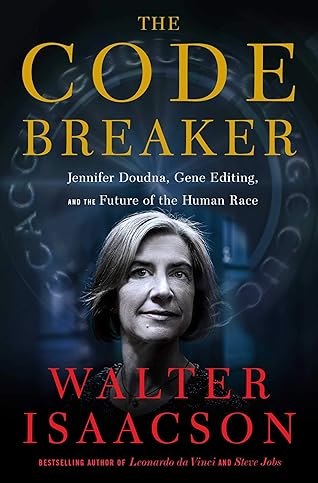More on this book
Community
Kindle Notes & Highlights
Read between
April 16 - April 24, 2022
The E. coli bacterium that Ishino studied is a very different organism from Mojica’s archaea. So it was surprising that they both had these repeated sequences and spacer segments.
CRISPR, for “clustered regularly interspaced short palindromic repeats.”
their spacer segments matched those of viruses that attacked that bacteria.
Mojica found that bacteria with CRISPR spacer sequences seemed to be immune from infection by a virus that had the same sequence.
Mojica
was an astonishing and elegant discovery, one that would have great repercussions.
The editors did not even send it out for review. It did not contain, they incorrectly judged, much that wasn’t in previous CRISPR papers.
Mojica says he was driven by his love of the beauties of nature.
“Something that’s basic can later have wide consequences.”
But Koonin and his team got one thing wrong. They speculated that the CRISPR defense system worked through RNA interference. In other words, they thought that bacteria used the mug shots to find a way to interfere with the messenger RNAs that carry out the instructions encoded by DNA.
Dicer,
“At the time, nobody had actually isolated the molecular components of the CRISPR system, tested them in a lab, and figured out their structures,” Doudna
“Once I started peering at the DNA sequences, I realized they were uninformative,” he says. “We had to determine structures, because structures, the folds and shapes, are conserved over a longer evolutionary period than the nucleic acid sequences.”
how RNA interference works.
The in vitro experiments allowed him to isolate the enzymes that are essential to interfering with the expression of
Doudna decided that her lab’s goal would be to dissect the CRISPR system into its chemical components and study how each worked.
Enzymes are a type of protein. Their main function is to act as a catalyst that sparks chemical reactions in the cells of living organisms, from bacteria to humans. There are more than five thousand biochemical reactions that are catalyzed by enzymes. These include breaking down starches and proteins in the digestive system, causing muscles to contract, sending signals between cells, regulating metabolism, and (most important for this discussion) cutting and splicing DNA and RNA.
These CRISPR-associated (Cas) enzymes
CRISPR RNA (crRNA), that can guide a scissors-like enzyme to a dangerous virus
Cas1, Cas9, Cas12, and Cas13.
Cas1 has a distinct fold,
the key to the memory-forming stage of the immune system.
linear model.
Instead, there was an iterative dance among basic scientists, practical inventors, and business leaders.
“It is just as often the case that invention is the parent of science:
“We saw there was a hundred-percent match between the CRISPR of the bacterial strain and the sequence of the virus that we knew had attacked
CRISPR-associated (Cas) enzymes were critical for acquiring new spacers and warding off attacking viruses.
Instead, the CRISPR system targeted the DNA of the invading virus.
then it could possibly be turned into a gene-editing tool.
silico.
how to splice pieces of DNA from different organisms to create hybrids.
Genentech, a
Doudna realized that she had to spend more time cultivating her lab rather than her bacterial cultures.
venture capitalists raised capital by divvying up equity stakes, then they entered into agreements with major pharmaceutical companies
blurring the lines between academic research and business.
turn Cas6 into a diagnostic tool
pure free-market capitalism.
three-way partnership of government, business, and academia.
government-business-university partnership
Bill and Melinda Gates Foundation,
“We plan on creating a suite of enzymes that specifically recognize RNA sequences characteristic of viruses including HIV, hepatitis C and influenza,”
an alluring mix of mystery and Parisian insouciance.
bacteria that cause pneumonia have DNA sequences that can shift, making the bacteria resistant to antibiotics.
As with so many other observant and creative people, she found that a sense of detachment or slight alienation made her better at figuring out the forces at play.
CRISPR RNAs,
“trans-activating CRISPR RNA,”
“tracer-RNA.”
It turns out that tracrRNA performs two important tasks. First, it facilitates the making of the crRNA, the sequence that carries the memory of a virus that previously attacked the bacteria.
Then it serves as a handle to latch on to the invading virus so that the crRNA can target the right spot for the Cas9 enzyme to
The fact that the tracrRNA did in fact stick around and play an important role in cleavage would later be among the discoveries published in the seminal 2012 paper that Charpentier would write with Doudna.


